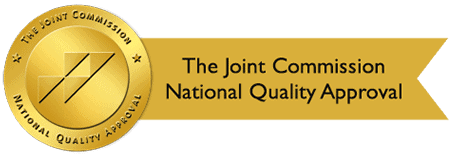By: Design for Change Recovery
Categories:
Sober Living Homes, Rehabs, and Halfway Houses: Key Differences
You are here:Frequently, sober living homes, rehabs, and halfway houses are mistakenly considered as the same thing. While each plays a vital role in a person’s recovery process, they differ in several ways.
In most cases, people who want to stop using drugs need to spend time in rehab before moving on to a sober living facility. Halfway houses are for people who have committed drug-related crimes. But, the differences are more complex than you might think.
Sober Living Homes vs. Rehabs
The type of addiction treatment you need will be influenced by several factors. They may include:
- The level of your addiction.
- Your work/school/family obligations.
- Your success in a detox program.
Addiction treatment facilities (rehabs) offer programs that address all aspects of addiction. The goal of rehab is to help a person understand the underlying reasons for their substance use and develop the skills to maintain sobriety. This level of treatment is not provided by a sober living home.
Each rehab facility differs in their approach to treatment, but they typically include a comprehensive curriculum that consists of evidence-based therapies such as:
- Cognitive Behavioral Therapy (CBT)
- Counseling Sessions
- Holistic Therapies
- Family Support
- Fitness and Exercise
Sober living homes don’t offer therapy or skills training. However, they do provide a stable, drug-free environment where people in recovery can safely transition from rehab to the outside world. Residents must adhere to house rules such as curfews, cleanliness, and drug testing.
Benefits of Drug Rehab Facilities
During drug rehab, people are guided through the process of overcoming their substance misuse or inappropriate use. Medication-assisted treatment (MAT) may be available, depending on the individual’s needs. Most facilities offer flexible programs that can be customized for each client’s unique situation.
Many rehabs offer on-site detoxification so clients can easily transition into a short or long-term rehabilitation program that includes counseling sessions, structured activities, and various therapies that facilitate healing.
The primary role of rehab is to help a person understand the root causes of their addiction so they can develop skills and strategies for managing those triggers.
Professional rehab programs have medical, psychiatric, and spiritual staff who are licensed and certified.
Benefits of Sober Living Homes
Many people who are exiting a rehab program don’t have a stable, supportive environment at home to return to. For that reason, they will benefit from time spent in a sober living home. The substance-free environment provides a stable, structured place where people in recovery can adapt to living without drugs or alcohol.
Most sober living facilities offer a three-month program, but some may offer longer or shorter stays, depending on a person’s recovery progress.
These are some of the benefits and features of sober living homes:
- Social interaction with others who are experiencing the same problems.
- A house manager who ensures all rules are followed.
- Fully furnished and may include cable TV, WiFi, and kitchen privileges.
- Areas for privacy and quiet time.
- Commuter-friendly locations.
Transitioning from rehab to a sober living facility is not mandatory, but it is highly recommended. It’s an excellent opportunity to hone relapse prevention skills and gradually adjust to the outside world.
Halfway Houses vs. Sober Living Homes: What’s the Difference?
If you are looking for a supportive environment after rehab, you may be confused by the different types of facilities. It’s common for sober living homes and halfway houses to be confused, so let’s look at the key differences between them:
Halfway Houses: Typically mandated for men or women who have spent time in a correctional facility where they served time for drug or alcohol-related crimes. Halfway houses may offer educational assistance, job training, mental health services, and financial planning.
Most halfway houses operate under state supervision, so residents have a corrections officer or social worker they must report to on a regular schedule. Residents may be required to complete court-mandated community service as well. The state operated houses may also be referred to as Transitional Centers, Community Recovery Centers, or Reentry Centers.
Sober Living Houses: Sober living homes are for people who are coming directly from a drug and alcohol rehab facility. Unlike halfway houses, sober living homes are privately owned or part of a continuum of care provided by a rehab facility.
The First Step to Sober Living Begins at Design for Change Recovery
Your success in sober living depends on a combination of factors. The first step is to choose the best rehabilitation program available. No matter which substance you use or how severe your addiction is, we can help. At Design for Change Recovery, we offer a range of services to ensure you get the level of treatment you need.
As part of our evidence-based methodologies, we provide detoxification, counseling, skills training, holistic therapies, and aftercare services. The programs are flexible and can be customized to fit your unique situation. If you’re looking for substance misuse or inappropriate use treatment that will help you reclaim your future, reach out to us today.
Design for Change is located in beautiful Lancaster, California where you can enjoy a welcoming environment while undergoing treatment. Contact us by phone, email, or online and let us help you get started on a happier, healthier lifestyle.
Sources:
- ncbi.nlm.nih.gov/ – What Did We Learn from Our Study on Sober Living Houses and Where Do We Go from Here?
- https://www.prisonpolicy.org/blog/2020/09/03/halfway/ – What You Should Know About Halfway Houses
- arg.org/news/ – Sober Living Houses (SLH) Research


